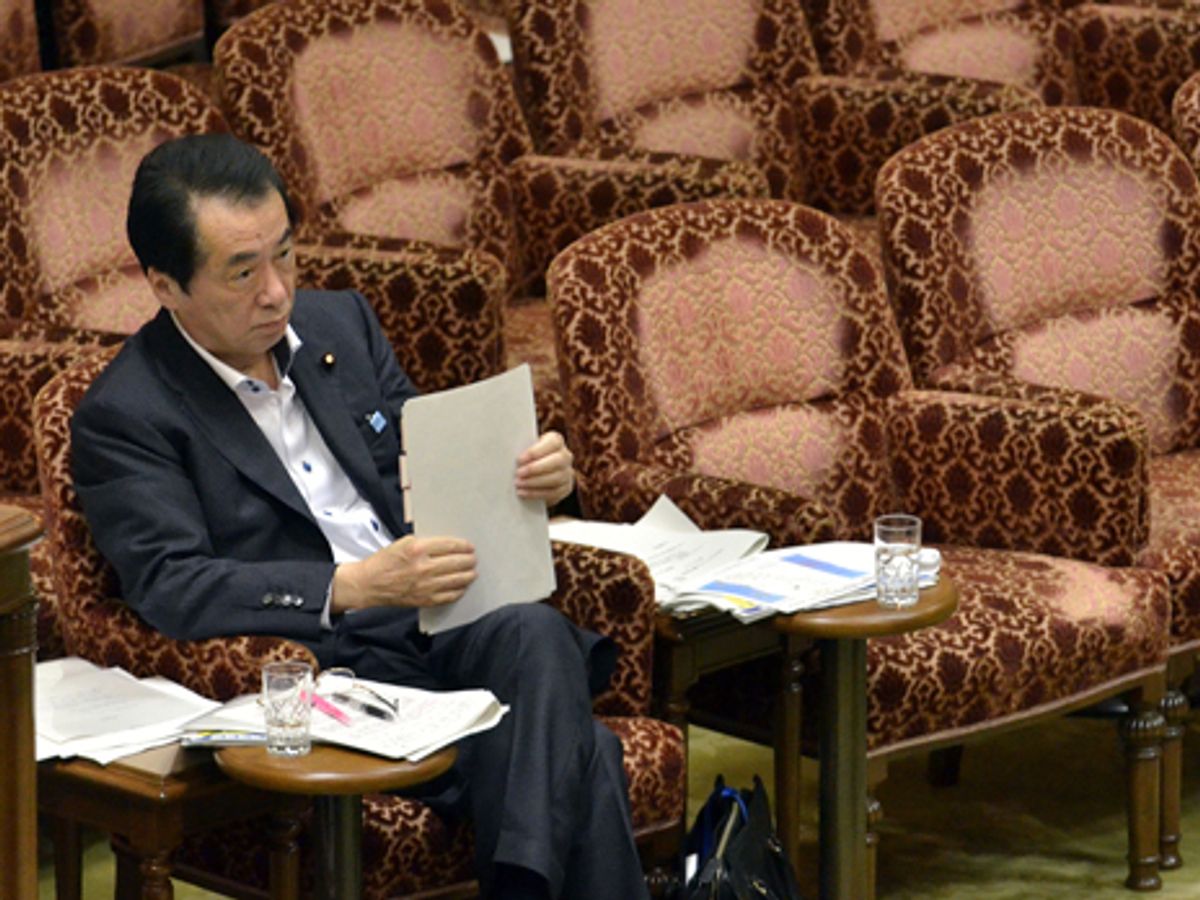Editor's Note: John Boyd is an IEEE Spectrum contributor reporting from Kawasaki, Japan. This is part of IEEE Spectrum's ongoing coverage of Japan's earthquake and nuclear emergency. For more details on how Fukushima Dai-1's nuclear reactors work and what has gone wrong so far, see our explainer.
In a surprise move, the Japanese government announced last Wednesday it would conduct safety assessments--dubbed stress tests--on all of the country’s nuclear reactors. The unexpected decision caused widespread confusion, and even consternation among some cabinet members, given that the Ministry of Economy, Trade and Industry (METI) had been reassuring certain prefectural and local governments that it was safe to restart their nuclear reactors.
The situation was hardly improved when on Monday the government announced that the safety assessment would use new standards and be carried out in two stages involving two entities, METI’s Nuclear and Industry Safety Commission (NISA) and the independent Nuclear Safety Commission.
Angered by the sudden announcement, Hideo Kishimoto, the mayor of Genkai in Kyushu’s Saga Prefecture, southern Japan, withdrew his approval to restart two reactors in the Genkai plant. He had agreed to their restart only the previous day, after being assured by Banri Kaieda, head of METI, that the reactors were safe.
Kishimoto was quoted in the Japanese press as saying, “If (the government) wants to conduct stress tests, they should have told us earlier. I can’t trust the government. (Prime Minister) Kan had better quit soon.”
The prime minister, responding to criticism in the Japanese Diet, said, “My instruction was inadequate and came too late, and I feel responsible for that.”
In explaining the decision for conducting the stress tests, Yukio Edano, the Chief Cabinet Secretary, said that although NISA had carried our regular safety inspections of the nuclear reactors and had the power companies implement additional safety measures after the 11 March earthquake and tsunami, “new procedures and rules will be implemented for evaluating safety. This is for further improvement of the safety of the reactors and to give residents (in the vicinity of the reactors) a sense of security and a sense of trust.”
Edano explained in a news conference on Monday that the first stage of the stress test will be conducted after regular inspections are made (currently at least every 13 months) to gauge an individual plant’s tolerance for extreme conditions such as earthquakes. And the second stage will be a more comprehensive assessment of all of Japan’s 54 reactors. NISA has been charged with coming up with the details and a schedule for the new standards, which must be approved by the Nuclear Safety Commission, an independent nuclear audit body.
The tests will take into account stress tests already underway in Europe in the wake of the Fukushima Dai-1 plant accident. These stress tests have been summarized by the European Commission and the European Nuclear Safety Regulation Group as “a targeted reassessment of the safety margins of nuclear power plants in the light of the events which occurred at Fukushima: extreme events challenging the plants safety functions and leading to a severe accident.”
Though the Japanese government’s motivation for conducting additional tests is to convince the public and others that it will then be completely safe to restart the off-line reactors, the concern now is that the new procedures will end up delaying the reactivation of these reactors.
“We don’t know the details yet for the primary (first) stage inspection, so we don’t know when the reactors can be restarted,” Kazuaki Matsui, executive director of the Institute of Applied Energy, an independent research group, told Spectrum. “And though the intention is to quicken their start up, the local government heads (hosting the reactors) may still not be satisfied with the results because of past experiences and because they don’t have confidence in government statements.”
With only 19 of the 54 reactors currently operating, it is not clear if electric power saving measures, including a mandatory 15-percent cut by large users in the northeast of Japan, will get the country through a hot humid summer without experiencing power cuts.
In response to such worries, Edano said that while the safety tests should be completed as quickly as possible, it was not possible to give a deadline. He added that the government would be working with power companies to help them make plans to overcome any additional generation shortfalls.
Progress and problems at Fukushima
Meanwhile, Tokyo Electric Power Co. (TEPCO) said that workers on Friday had confirmed that the piping system in the No. 3 reactor of the crippled Fukushima nuclear plant was in order to enable them to inject nitrogen into the reactor to help prevent another hydrogen explosion. TEPCO is already injecting nitrogen into the Nos. 1 and 2 reactors, but had been prevented from entering the No. 3 reactor building until now because of high radiation following a hydrogen explosion in March. Injection was planned to begin on Tuesday.
That was the good news, not so for TEPCO’s problematic water decontamination-recycling cooling system. On Tuesday NHK, Japan’s national broadcaster, reported that workers had discovered water leaking from the ad-hock system being used to decontaminate the pooled radioactive water in the plant, and the system had to halted for repairs. A similar leak was spotted Sunday also bringing the system to a halt, while other problems have been reported since the system began full operation in late June. Establishing a stable cooling system for all three crippled reactors is a major goal to be accomplished by 17 July, according to TEPCO’s roadmap, which aims to achieve a cold shutdown by January.
Photo: Kyodo/AP Photo





